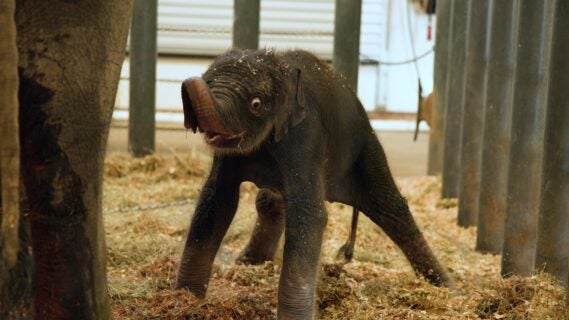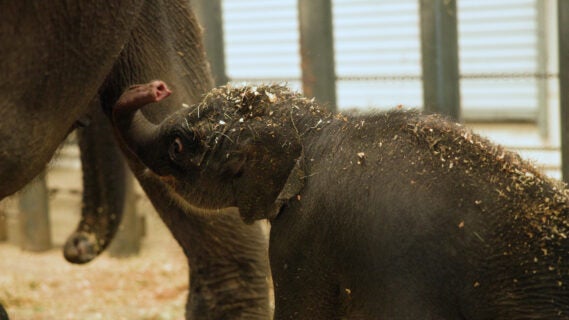Endangered Asian elephant calf ‘Kirby’ born at Houston Zoo
The baby elephant was born in Texas weighing a whopping 314 pounds
Your support helps us to tell the story
From reproductive rights to climate change to Big Tech, The Independent is on the ground when the story is developing. Whether it's investigating the financials of Elon Musk's pro-Trump PAC or producing our latest documentary, 'The A Word', which shines a light on the American women fighting for reproductive rights, we know how important it is to parse out the facts from the messaging.
At such a critical moment in US history, we need reporters on the ground. Your donation allows us to keep sending journalists to speak to both sides of the story.
The Independent is trusted by Americans across the entire political spectrum. And unlike many other quality news outlets, we choose not to lock Americans out of our reporting and analysis with paywalls. We believe quality journalism should be available to everyone, paid for by those who can afford it.
Your support makes all the difference.An endangered Asian elephant calf was born last week at the Houston Zoo.
The Texas zoo said 34-year-old Asian elephant Shanti gave birth to 314-pound Kirby on November 15 at 3 p.m. CST. Shanti had been in labor for 19 hours and gave birth in the McNair Asian Elephant Habitat cow barn under the supervision of keepers and veterinary staff members.
Remarkably, just six minutes after her birth, Kirby was standing. After less than a half hour, she started to walk and within an hour and a half of her birth, she was nursing from Shanti.
“Shanti and Kirby underwent post-natal exams and will spend several days bonding behind the scenes before they are ready to make their public debut,” the zoo said.
During the bonding period, the zoo’s elephant team will watch Kirby’s weight and see how she communicates with Shanti.

Shanti had been pregnant for 21 months. Pachyderms, like elephants, rhinoceroses, and hippopotamuses, have one of the longest pregnancies of any land mammal.
Earlier this year, the zoo welcomed Chuck: a 9,500-pound Asian elephant from the Denver Zoo.
Asian elephants — known as Elephas maximus, which translates from Latin as “greatest elephant” — are an endangered species, according to the IUCN Red List of Threatened Species.
They typically live into their fifties, according to the Smithsonian’s National Zoo and Conservation Biology Institute, and weigh between 6,000 and 12,000 pounds. The largest members of the herbivorous species are 12 feet tall.
Populations have declined by at least 50 percent in the last three generations to just 15 percent of its historic range.

Sadly, while an estimated 100,000 Asian elephants existed at the beginning of the 20th century, there are fewer than 50,000 Asian elephants left today.
While they once roamed freely across Asia, the forest animals’ populations have been fragmented. More than half of wild Asian elephants are found in India. Numbers have dwindled in other areas, like Vietnam, Cambodia, and China, according to the International Fund for Animal Welfare.
The largest living land animal in Asia, the elephants are also threatened by poaching, animal trafficking, deadly endotheliotropic herpesvirus, and human-elephant conflict. The World Wildlife Fund notes that they are even more endangered than their African cousins.
“That’s because the biggest threat to their survival isn’t poaching but habitat loss. As urbanization, industrial development, and agricultural expansion increase in countries like India and Indonesia, Asian elephants’ habitats are shrinking rapidly, leading to increasingly isolated populations and a rising number of deadly human-elephant conflicts,” it said.

Join our commenting forum
Join thought-provoking conversations, follow other Independent readers and see their replies
Comments